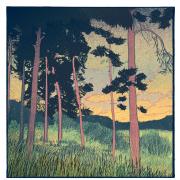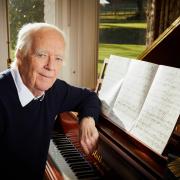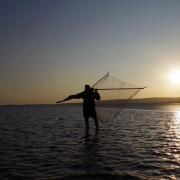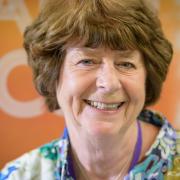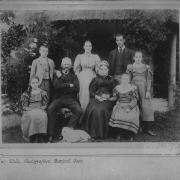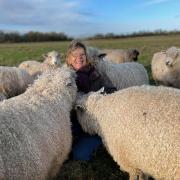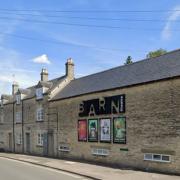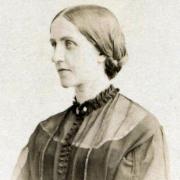If we ask passers-by about Anne Hathaway, they’re quite likely to mention an American actress. If we mention Shakespeare, they might twig that we’re actually talking the Anne Hathaway who was the Bard’s wife. If they’re ‘in the know’ they might conjure up that old chestnut that William left her his ‘second best bed’ in his will. That’ll be about it though, even if we’re lucky, although to be fair to everyone out there we don’t know an awful lot about this month’s Great, Anne Hathaway, aka ‘Agnes’ (1556-1623), who died 400 years ago in August.
So, what do we know about Anne? Well, she came from good farming stock apparently, her father described as a ‘husbandman’, and was born and raised in Shottery, a small village a mile west of Stratford-upon-Avon back in Anne’s time, but regarded very much as a part of the town today. There were loads of Hathaways in Warwickshire at the time, so many in fact that any self-respecting Hathaway had to adopt a nom-de-plume to differentiate from the crowd; the Shottery lot called themselves ‘Gardener’.

The few facts we know about her are that she married the Bard, had his children, saw them christened, was left that bed, and died. Much of this will by necessity have to be speculative. We don’t even know her date of birth but assume it was sometime in 1556. We do at least know when she died, August 6, 1623; her grave in Holy Trinity, Stratford, claiming her to be 67. Her father was Richard Hathaway (1526-81) who became the next tenant of Hewlands Farm of which the building known today as ‘Anne Hathaway’s Cottage’ was a part. If the genealogies I’ve studied are correct, then there were numerous children of this marriage including the eldest, Anne, and brother Bartholomew, who’d raise enough cash to actually purchase the freehold of Hewlands, and Richard’s subsequent marriage.
The marriage of William and Anne was an early one for the future poet and playwright and to an older woman, too, as Anne was some eight years his senior. They were wed in 1582; Anne was 26, William 18, the exact place unknown. Anne’s father had died the year before although there was still a stepmother, Joan Hathaway, and also some young stepchildren. The happy couple were ostensibly of similar social rank; however, Anne was undoubtedly a catch for Shakespeare as her family’s fortunes were on the up which couldn’t be said for his lot. Anne joined William and his parents in the Shakespeare family home in Henley Street, aka the ‘birthplace’.


The following year, just six months later in fact, the couple would have a daughter, Susanna (1583-1649). There’s been much pondering on the nature of the marriage, whether it was a ‘shotgun’ one because of Anne’s pregnancy and indeed whether there may have been another woman in the frame which may have caused the Hathaways to turn the screws; speculation which is quite possibly erroneous. This particular rumour hasn’t been scotched, though. There are still those who hold to the belief that there was another woman, Anne Whateley of Temple Grafton, and that she was beaten to the altar by a close head.
Notwithstanding all that, their family would grow spectacularly two years later (1585) when Anne gave birth to twins, Hamnet (1585-1596) and Judith (1585-1662). Those twins were christened a decade later in 1595 and that event would frustratingly be our second-last meaningful reference to their mother, Anne Hathaway, who slips tantalisingly away from our clutches. Hamnet also slipped from her clutches, taken during an outbreak of plague aged just eleven.
We believe that William headed to London in 1585, in all likelihood to carve out a career for himself. The view, passed down by tradition, is that the Bard’s dramatic career dates from around 1590-91 (dramatic in the sense of scribing plays not because his life was full of drama, although it quite possibly was). When the theatres closed because of the plague over 1592-94 (an echo from the past for our recent experience), then Shakespeare concentrated on his sonnets which were certainly known about by 1598. The first irrefutable evidence of his association with the stage comes in 1594 when he’s named in the Chamberlain’s company (later King’s men) of players.

I’m starting to talk about him rather than her a bit too much which is a perennial problem when one’s trusty biographical dictionary has an entry on William the size of a Tolstoy epic with no separate entry for Anne; the poor lass just gets passing references in Will’s monologue. The pair didn’t even spend that much time together. William pursued his career in London; Anne remained back in Stratford. The budding Bard did return home for a period each year though. It’s possible this arrangement didn’t sit well with Anne, but we have no knowledge of what rows may have accompanied Shakespeare’s pursuit of his dream. Poor Anne was left at home with three youngsters.
Fame and also fortune came Shakespeare’s way from 1597 when the expiry of the lease at the Theatre (a great name for a theatre, incidentally) led to the building of the Globe, with William and others taken on as partners in this new enterprise. It was around this time that Anne and the children moved into New Place, William’s intended retirement home. Stratford’s pull on William is evident because of his intention to retire back there, but as a man of substance, hence his purchasing of arable land and buying up of tithes. There’s another passing reference to the elusive Anne in 1601 when she was mentioned in the will of Thomas Whittington, who’d worked for her father. The entry serves only to fuel further speculation. The eminent physician, Dr Hall, would marry her daughter Susanna, and after William retired from the theatre in 1613, he would entertain the likes of Ben Jonson at New Place, playwright and partner reunited. Susanna, William’s principal heir, would have a daughter, Elizabeth (1608-1670), the Bard’s last surviving descendant, Anne’s granddaughter, who’d live on to 1670. Judith’s three children, the Quiney clan, Shakespeare (1616-1617), Richard (1618-1639) and Thomas (1620-1639), all died young and left no descendants.

Anne would be widowed in April 1616. And the last reference to Mrs Hathaway? It came, of course, in the Bard’s will where his wife was a beneficiary, receiving ‘my second-best bed with the furniture’, which doesn’t need to be interpreted in a mean or disrespectful manner as some may well do. Scholars of Shakespeare know not to take it this way. The best bed isn’t mentioned, although it would have gone to Susanna. It’s been suggested that may have been the family’s guest bed, whilst the one left to Anne was actually the marital bed. Who knows? There’s also speculation that one of the Bard’s sonnets refers to Anne as it includes the words ‘hate away’ (close) which just fuels the gossip that he might not have liked her that much, hence the second bed business. Anne continued to live in New Place until her own death.
Anne Hathaway died in 1623, aged 67, and was buried in Holy Trinity Church, Stratford-upon-Avon, next to her husband, on August 8. Her grave records that: ‘Heere lyeth interred the body of Anne, wife of William Shakespeare, who depted this life the 6th day of August. 1623 being of the age of 67 yeares’. There are some quaint early-17th century spellings. The declaration of her age is definite, perhaps a bit more definite than we can be. Exactly three months later, her late-husband’s posthumous immortality was guaranteed by the publication of the 1st Folio of his plays.


The only living descendants of the Stratford Shakespeares have to trace their genealogy through a lady known as ‘Joan Hart’, who was William’s married sister, and therefore Anne’s sister-in-law. Anne Hathaway’s Cottage remained in the family until the 19th century when it had to be sold. It is today owned and managed by the Shakespeare Birthplace Trust.
CHRONOLOGY
1556 – Anne Hathaway born in Shottery.
1582 – Marriage of William Shakespeare and Anne Hathaway (November).
1583 – Birth of Anne Hathaway’s first child, Susanna (May).
1585 – Birth of Anne’s twins, Hamnet and Judith.
1597 – Shakespeare makes it in London and buys New Place in Stratford.
1601 – The elusive Anne gets a mention in the will of Thomas Whittington.
1607 – Marriage of Anne’s daughter, Susanna, to Dr. John Hall.
1608 – Birth of Anne’s granddaughter, Elizabeth.
1616 – Death of William Shakespeare (April).
1623 – Death of Anne Shakespeare in Stratford-upon-Avon (August 6) aged c.67.

References
Chambers Biographical Dictionary (1974)
Shakespeare (I. Brown, 1949)
Shakespeare Birthplace Trust (shakespeare.org.uk)
Shakespeare Resource Centre (bardweb.net)
Britannica (britannica.com)
Encyclopedia.com (encyclopedia.com)
William Shakespeare Info (william-shakespeare.info)
History Hit (historyhit.com)
WikiTree (wikitree.com)
Geni (geni.com)
Royal Shakespeare Company (rsc.org.uk)




